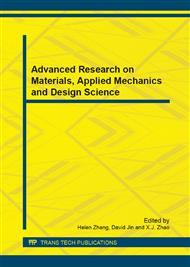p.136
p.140
p.147
p.151
p.156
p.161
p.169
p.173
p.177
Correlation between the Geometric Parameters of Corrosion Pit and Stress Concentration Factor
Abstract:
Corrosion is one major damage mechanisms of aircraft structure, which can result in catastrophic failures and disasters. Quantitative analysis of pitting stress concentration effect is necessary for aircraft aluminum alloy structures, especially in coastal area. In the present paper, based on the observations of corrosion pit morphology of 2524 aluminum alloy using Keyence VHX-600 optical microscope and white light confocal microscope, three-dimensional finite element analyses (FEA) had been conducted systematically to evaluate the stress distribution of the cuboids aluminum alloy specimen with pits stressed remotely under uniaxial tension. It is found that pit metric parameter a/2c is the key parameter affecting stress concentration factor (SCF) and an empirical quantitative relation is given. In addition, we study the contribution of secondary (premature) pits at the bottom of hemi-spherical pit to the SCF of primary pit and an estimation formula is given. These provide significant methods for characterizing pitting damage and quantitatively estimating SCF so as to predict life.
Info:
Periodical:
Pages:
156-160
Citation:
Online since:
June 2013
Authors:
Price:
Сopyright:
© 2013 Trans Tech Publications Ltd. All Rights Reserved
Share:
Citation:


